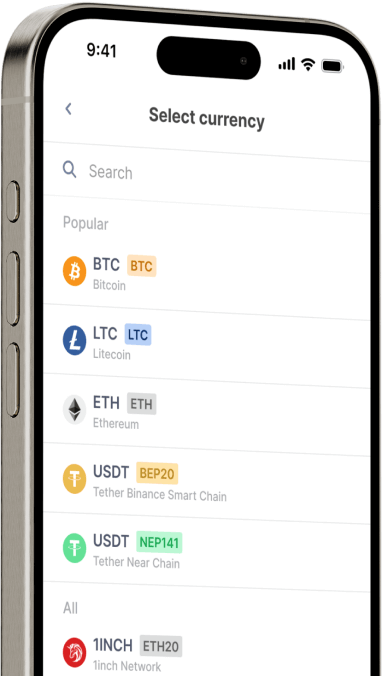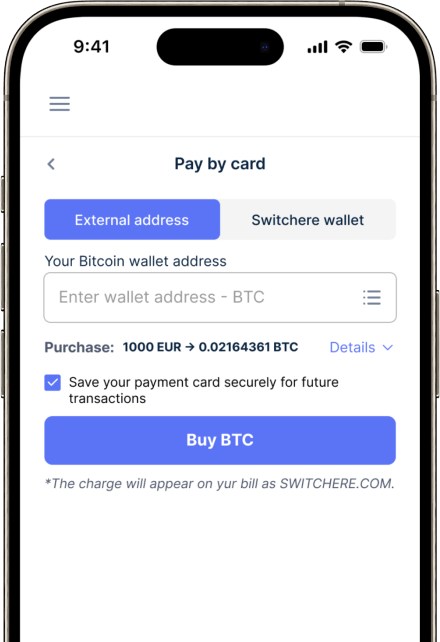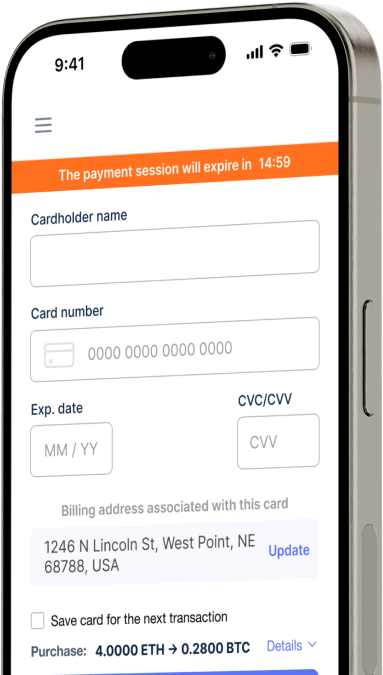Convert
Bulgarian Lev (BGN) to Cartesi (CTSI) Instantly
Purchase Cartesi (CTSI) with Bulgarian Lev (BGN) easily at Switchere and benefit from fast, secure transactions.
About
Cartesi (CTSI)
Cartesi (CTSI) is a Layer-2 infrastructure platform designed to resolve the critical issue of computational scalability and high costs on blockchain networks. Often referred to as "The Blockchain OS," its primary objective is to enable decentralized applications (dApps) with complexities that rival their centralized Web2 counterparts. Cartesi achieves this by allowing developers to build smart contracts and dApps within a full Linux operating system environment, utilizing mainstream programming languages and software stacks. This approach significantly lowers the barrier to entry for developers transitioning from Web2 to Web3, fostering a richer and more powerful dApp ecosystem built on robust blockchain technology.
The core of the platform is the Cartesi Machine (CM), a deterministic virtual machine that executes intensive computations off-chain. By leveraging Optimistic Rollups, Cartesi can process these complex calculations externally while anchoring the results with cryptographic security on the underlying Layer-1 blockchain, such as Ethereum. This hybrid model provides the immense computational power of off-chain processing with the verifiable trust of an on-chain digital ledger. The native utility token, CTSI, is integral to the network's tokenomics. It is used for staking within Cartesi's Noether Proof-of-Stake (PoS) sidechain, where node runners help secure the network and earn rewards. CTSI also functions as the payment method for computation and data availability services within the ecosystem.
Buy Other 150+ Cryptocurrencies for Bulgarian Lev (BGN)
Other Coins for Bulgarian Lev (BGN)
-
BGN to ZRX
-
BGN to 1INCH
-
BGN to AAVE
-
BGN to ACH
-
BGN to ALGO
-
BGN to TLM
-
BGN to ANKR
-
BGN to APE
-
BGN to NFT
-
BGN to API3
-
BGN to APT
-
BGN to ARPA
-
BGN to AUDIO
-
BGN to AVAX
-
BGN to AVAX
-
BGN to AXS
-
BGN to BADGER
-
BGN to BAL
-
BGN to BNT
-
BGN to BAT
-
BGN to BNB
-
BGN to BSW
-
BGN to BSV
-
BGN to BLUR
-
BGN to BONE
-
BGN to CTSI
-
BGN to CELR
-
BGN to CELO
-
BGN to CEL
-
BGN to LINK
-
BGN to CHZ
-
BGN to CHR
-
BGN to C98
-
BGN to COMP
-
BGN to CFX
-
BGN to PEOPLE
-
BGN to CVX
-
BGN to ATOM
-
BGN to CTC
-
BGN to CRV
-
BGN to DAI
-
BGN to DASH
-
BGN to MANA
-
BGN to DENT
-
BGN to DGB
-
BGN to DYDX
-
BGN to XEC
-
BGN to EOS
-
BGN to ETC
-
BGN to ENS
-
BGN to ETHW
-
BGN to FET
-
BGN to FIL
-
BGN to FLOKI
-
BGN to GALA
-
BGN to GNO
-
BGN to ONE
-
BGN to HBAR
-
BGN to HOT
-
BGN to HOOK
-
BGN to ICX
-
BGN to ILV
-
BGN to IMX
-
BGN to INJ
-
BGN to ICP
-
BGN to IOST
-
BGN to IOTX
-
BGN to JASMY
-
BGN to JST
-
BGN to KAVA
-
BGN to KCS
-
BGN to KSM
-
BGN to KNC
-
BGN to LDO
-
BGN to LQTY
-
BGN to LPT
-
BGN to LOOKS
-
BGN to LRC
-
BGN to LUNA
-
BGN to MKR
-
BGN to MASK
-
BGN to EGLD
-
BGN to ALICE
-
BGN to NEAR
-
BGN to XEM
-
BGN to NEXO
-
BGN to NOT
-
BGN to NMR
-
BGN to OKB
-
BGN to OMG
-
BGN to ONT
-
BGN to EDU
-
BGN to OP
-
BGN to OGN
-
BGN to CAKE
-
BGN to PAXG
-
BGN to PENDLE
-
BGN to DOT
-
BGN to POL
-
BGN to QTUM
-
BGN to QNT
-
BGN to RDNT
-
BGN to XRD
-
BGN to RVN
-
BGN to REN
-
BGN to RSR
-
BGN to RLC
-
BGN to RPL
-
BGN to SFP
-
BGN to SHIB
-
BGN to SKL
-
BGN to SXP
-
BGN to STND
-
BGN to STG
-
BGN to XLM
-
BGN to GMT
-
BGN to STORJ
-
BGN to STMX
-
BGN to SUSHI
-
BGN to SNX
-
BGN to USDT (Polygon)
-
BGN to USDT (AVAC)
-
BGN to USDT (BEP20)
-
BGN to USDT (ERC20)
-
BGN to USDT (SPL)
-
BGN to USDT (NEP141)
-
BGN to USDT (FA2)
-
BGN to USDT (TRC20)
-
BGN to USDT (JETTON)
-
BGN to XTZ
-
BGN to GRT
-
BGN to SAND
-
BGN to TFUEL
-
BGN to THETA
-
BGN to RUNE
-
BGN to TON
-
BGN to TUSD (BEP20)
-
BGN to TUSD (TRC20)
-
BGN to TWT
-
BGN to UOS
-
BGN to UMA
-
BGN to UNI
-
BGN to USDC (Polygon)
-
BGN to USDC (SPL)
-
BGN to USDC (OP)
-
BGN to USDC (BEP20)
-
BGN to USDC (AVAC)
-
BGN to USDC (ARB)
-
BGN to USDC (ERC20)
-
BGN to VET
-
BGN to VRA
-
BGN to WAXP
-
BGN to WOO
-
BGN to WLD
-
BGN to WBTC
-
BGN to WMINIMA
-
BGN to XDC
-
BGN to YFI
-
BGN to YGG
-
BGN to ZIL
How to Buy Cartesi (CTSI)
Frequently Asked Questions
-
What does the BGN/CTSI trading pair represent in the digital asset market?
The BGN/CTSI pair represents the exchange rate between the Bulgarian Lev (BGN) and the Cartesi (CTSI) token. It allows traders to purchase CTSI, the utility token for Cartesi's Layer-2 platform, directly using BGN. Cartesi is notable for integrating a Linux environment for decentralized applications, enabling complex off-chain computations and enhancing blockchain scalability.
-
Why would a Web3 developer be interested in acquiring CTSI tokens?
A Web3 developer would acquire CTSI primarily for its utility within the Cartesi ecosystem. The CTSI token is used to pay for transaction fees for off-chain computations inside the Cartesi Machine, which runs a full Linux OS. This allows them to build more complex and computationally intensive dApps. Additionally, developers can stake CTSI in Cartesi's Noether Proof-of-Stake system to earn rewards and contribute to network security.
-
How does Cartesi's optimistic rollup technology differ from other Layer-2 solutions?
Cartesi's key differentiator is its virtual machine (the Cartesi Machine), which is a self-contained Linux environment. While other optimistic rollups scale EVM-compatible smart contracts, Cartesi allows developers to build dApps using mainstream programming languages and software stacks that run on Linux. This unlocks significantly more complex and powerful off-chain computation, bridging the gap between blockchain and traditional software development.
-
What are the typical fiat on-ramp methods for purchasing CTSI with BGN?
While direct BGN/CTSI pairs are rare, a common pathway involves using a cryptocurrency exchange that accepts BGN deposits via bank transfer or debit/credit card. Often, users first convert BGN to a major currency like EUR or USD on the platform and then trade that for CTSI. All reputable exchanges will require KYC/AML compliance before enabling fiat transactions.
-
What are the security considerations when converting BGN to CTSI?
When converting BGN to CTSI, prioritize using a well-regulated cryptocurrency exchange with a strong security track record. Enable two-factor authentication (2FA) on your account. After the purchase, it is best practice to withdraw your CTSI tokens to a personal, non-custodial digital wallet where you control the private keys. Since CTSI is an ERC-20 token, ensure your wallet supports the Ethereum network.
-
After acquiring CTSI with BGN, what are the options for staking the token?
Once you have CTSI tokens, you can participate in Cartesi's Noether Proof-of-Stake (PoS) system. This can be done by running your own node if you are technically proficient, or more commonly, by delegating your CTSI to a public staking pool. Delegating allows you to earn a share of the staking rewards generated by the pool operator without the complexity of managing your own infrastructure, thus helping to secure the Cartesi network.




